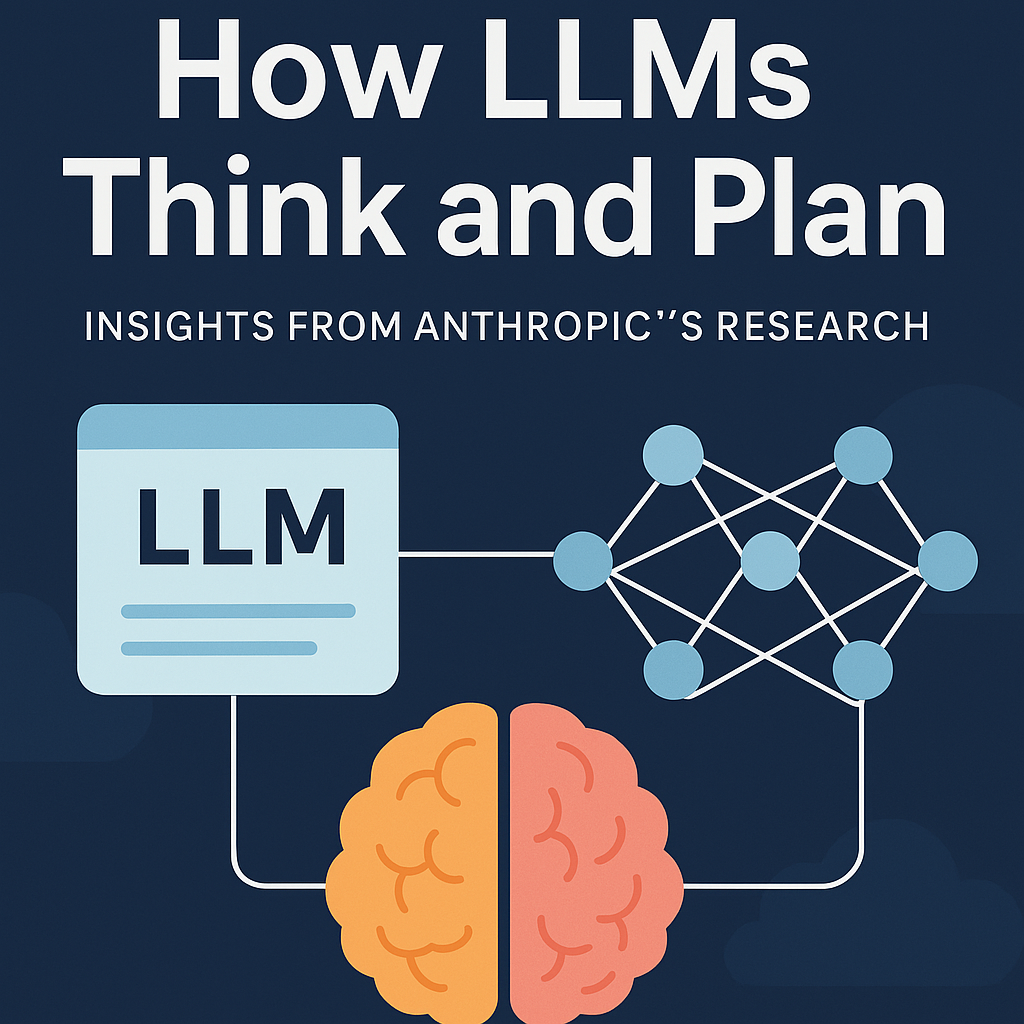How LLMs Think and Plan: Insights from Anthropic’s Research
April 2, 2025 | by Aarav Mehta

Introduction
Artificial Intelligence (AI) is evolving rapidly, and recent research by Anthropic has provided groundbreaking insights into how large language models (LLMs) like Claude think, plan, and reason. This research offers a deeper understanding of how AI processes information, makes predictions, and even plans ahead, much like the human brain.
In this blog, we’ll break down the key findings from Anthropic’s research in a simple and engaging way—so whether you’re a tech enthusiast, developer, or someone interested in AI, you’ll walk away with a solid understanding of how LLMs function.
🔍 How Do LLMs Think?
One of the biggest questions in AI research is: Do language models truly think, or do they just predict words based on patterns?
According to Anthropic’s research, LLMs don’t just generate words randomly—they have structured internal reasoning pathways. These models break down problems into smaller steps, process multiple pieces of information simultaneously, and even plan ahead before generating responses.
Example: Planning Ahead for Rhyme
When writing a poem, an AI model like Claude doesn’t just generate words one by one. Instead, it plans ahead for rhymes.
For example, consider this short poem:
He saw a carrot and had to grab it,
His hunger was like a starving rabbit.
Before completing the second line, the model already decided that the last word should rhyme with “grab it.” This means the AI is not just predicting words but strategically planning its response (Tracing the thoughts of a large language model \ Anthropic).
🧠 LLMs and Multi-Step Reasoning
Another fascinating insight from the paper is how AI models connect multiple concepts to derive answers.
Example: Geography Question
If you ask Claude:
“What is the capital of the state where Dallas is located?”
Instead of recalling a direct answer, it follows these steps:
- Recognizes that Dallas is in Texas
- Retrieves that Austin is the capital of Texas
- Combines both facts to give the final answer: Austin
This multi-step reasoning shows that AI isn’t just recalling facts but actually building logical connections between pieces of information (Tracing the thoughts of a large language model \ Anthropic).
🔢 Can AI Perform Mental Math?
LLMs are not built as calculators, but somehow, they can solve math problems.
For instance, if asked 36 + 59, the AI doesn’t simply memorize sums from its training data. Instead, it performs parallel calculations:
- One part of the model estimates the sum
- Another part calculates the last digit precisely
- The model then combines both to produce an accurate answer
This reveals that AI uses a hybrid approach—balancing approximation with precision, much like humans do when calculating mentally (Tracing the thoughts of a large language model \ Anthropic).
🚨 The Problem of Hallucinations in AI
One challenge in LLMs is hallucination—when an AI generates false or misleading information.
Anthropic’s study found that models sometimes fabricate logical steps to justify their answers. For example:
- When solving simple math problems, the AI shows clear step-by-step reasoning
- But when faced with complex math, it sometimes “hallucinates” a process that sounds correct but isn’t based on actual computation (Measuring Faithfulness in Chain-of-Thought Reasoning \ Anthropic).
This highlights a major issue: just because an AI provides reasoning doesn’t mean it’s always correct.
🌟 What This Means for the Future of AI
Anthropic’s research has huge implications for AI development, including:
✅ More transparent AI – We can now analyze AI reasoning step-by-step
✅ Better AI training – By understanding where models fail, we can improve them
✅ New auditing techniques – AI models can be tested for biases and inconsistencies
The ability to trace AI’s decision-making is a major step toward creating trustworthy and reliable AI systems.
📌 Final Thoughts
AI isn’t just a black box anymore—thanks to research from Anthropic, we now have a clearer picture of how models like Claude think, plan, and reason. As AI continues to advance, understanding its decision-making process will be crucial for ensuring transparency, accuracy, and reliability.
Want to dive deeper? Read the full research paper here.
If you have any questions, feel free to contact us here.
